LEARN / ARTICLE
Our Buildings Are Broken
Key Points:
- Humans have become an indoor species, spending most of their time inside homes, offices, gyms, malls, or cars.
- While buildings protect us from outdoor weather, they don’t shield us from air pollution like PM2.5, which is hazardous and prevalent in Indonesia.
- PM2.5 levels inside buildings often exceed safe limits, impacting our health and cognitive performance.
- We can control indoor air quality by monitoring and improving it for healthier environments.
“We shape our buildings; thereafter they shape us.” — Winston Churchill
In his book “Healthy Buildings: How Indoor Spaces Can Make You Sick - Or Keep You Well” Dr. Joseph G. Allen highlights that humans have evolved to become an indoor species.
Think about it.
💭 We spend about 10-12 hours inside our homes (8 hours of which we should be sleeping).
💭 We spend about 8 hours inside our offices. (maybe even more).
💭 And the remaining time, we could be in a gym, a mall, a restaurant or a car. All inside.
💭 Either way, most of our waking lives - we are indoors.
For years we have assumed that our buildings are our safe havens. When we go inside it no longer rains/snows on our heads, the noisiness of urban life is muted out and the temperature is good enough to remove our jackets (in the winter) or stop sweating (in the tropics & summer).
We feel safe and comfortable. But are we?
The #1 environmental threat to human health in the world is outdoor air pollution, and by going indoors we feel that we are protecting ourselves.
We’re not.
Our buildings are broken, and here’s why.
Our buildings don’t keep us safe from air pollution
We may feel more comfortable inside our buildings, but our bodies are being impacted by something else - PM2.5.
PM2.5 or Particulate Matter 2.5 has been highlighted by the World Health Organization as one of the most dangerous pollutants in the world. PM2.5 is 2.5 microns in size, visible only through an electron microscope and small enough to enter our lungs and bloodstream.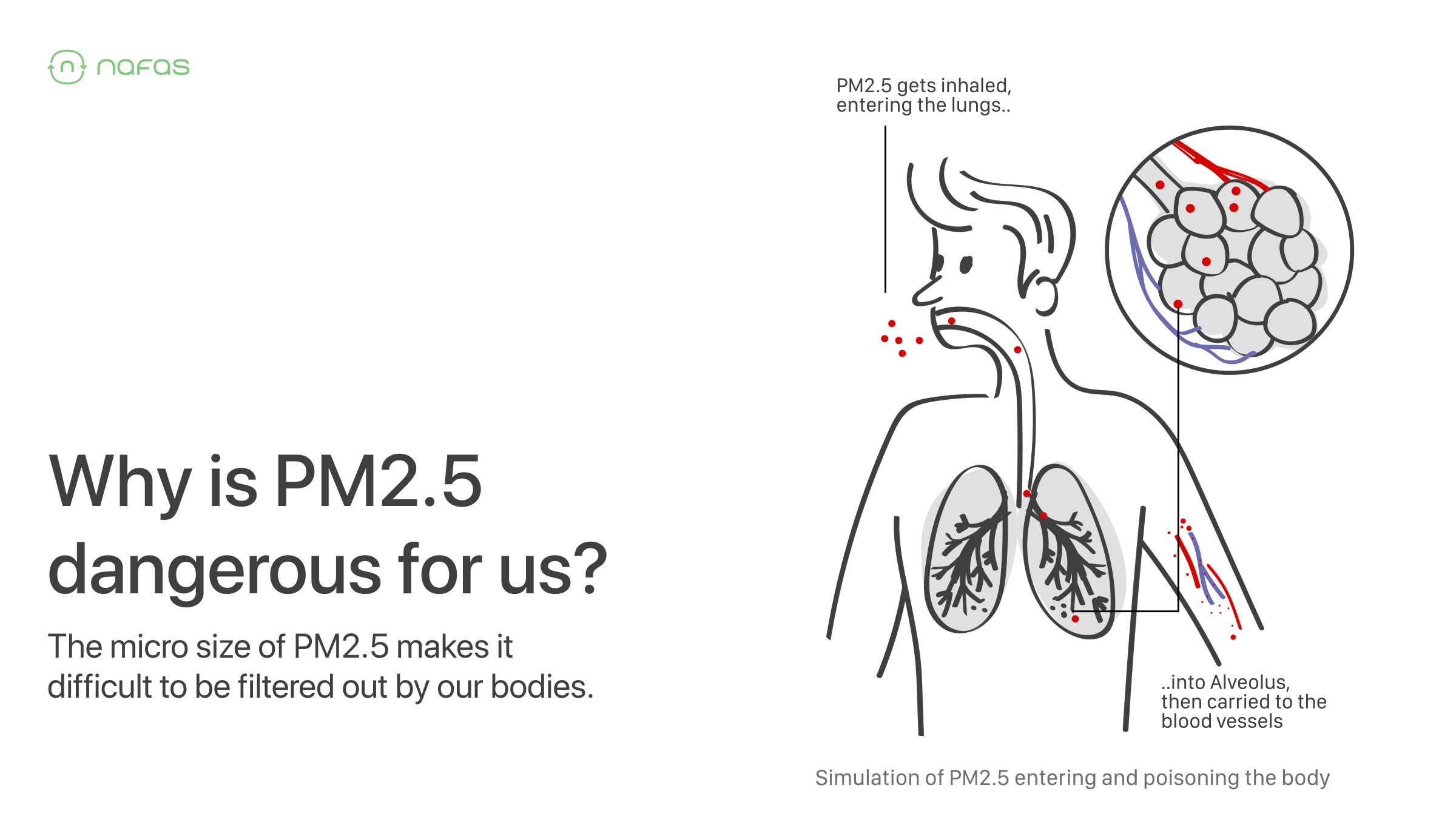
PM2.5 is also the most common pollutant in Indonesia - where the average yearly concentrations far exceed the various guidelines for “Good” air quality, including the Indonesian air quality index ISPU (15 µg/m3), US EPA index (12 µg/m3) and WHO guideline (5 µg/m3).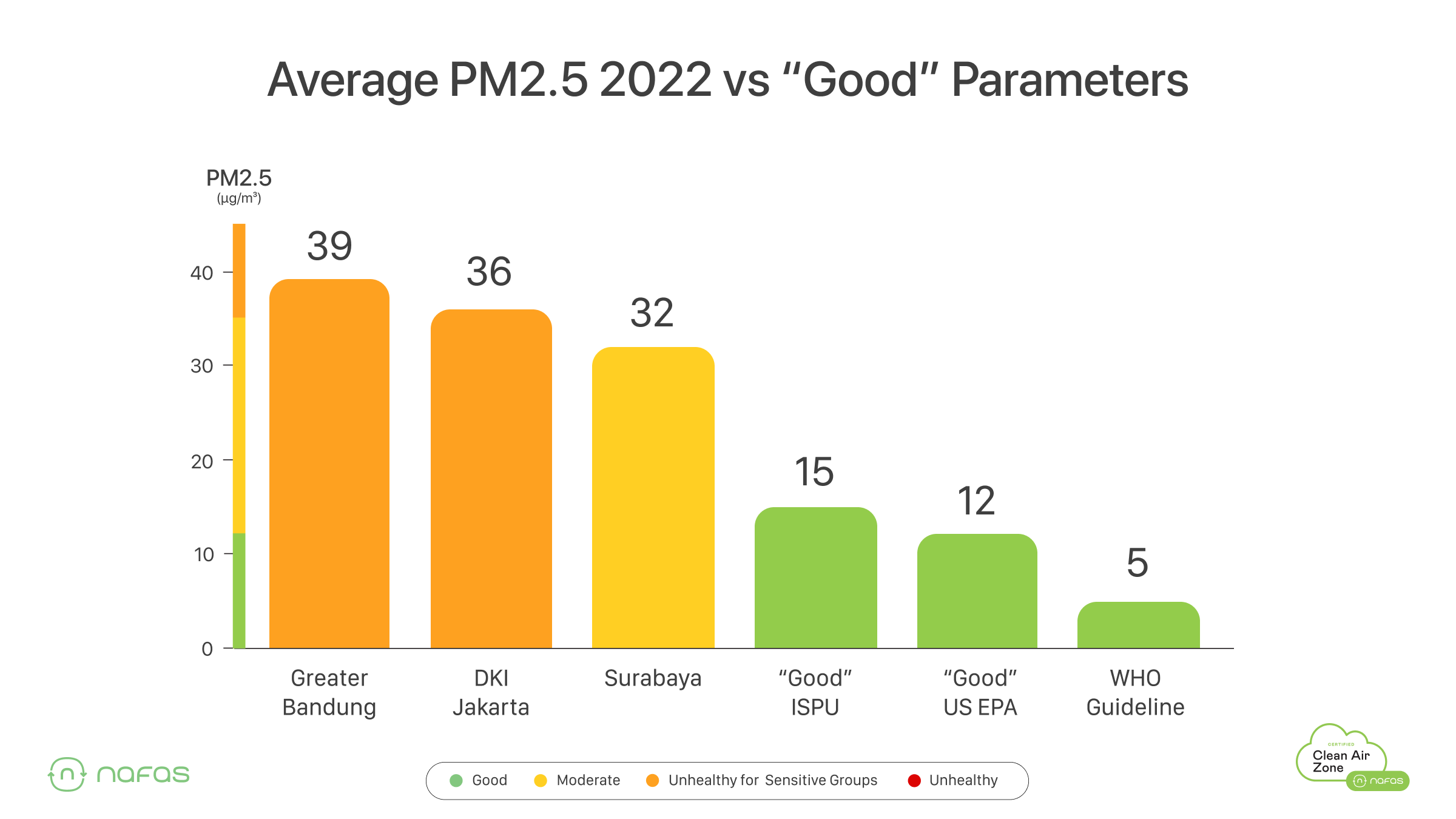
In the last 2 months - May and June 2023, the PM2.5 levels outdoors in Jakarta even reached as high as 106 µg/m3. The monthly averages for both months reached 45 µg/m3 and 43 µg/m3 respectively.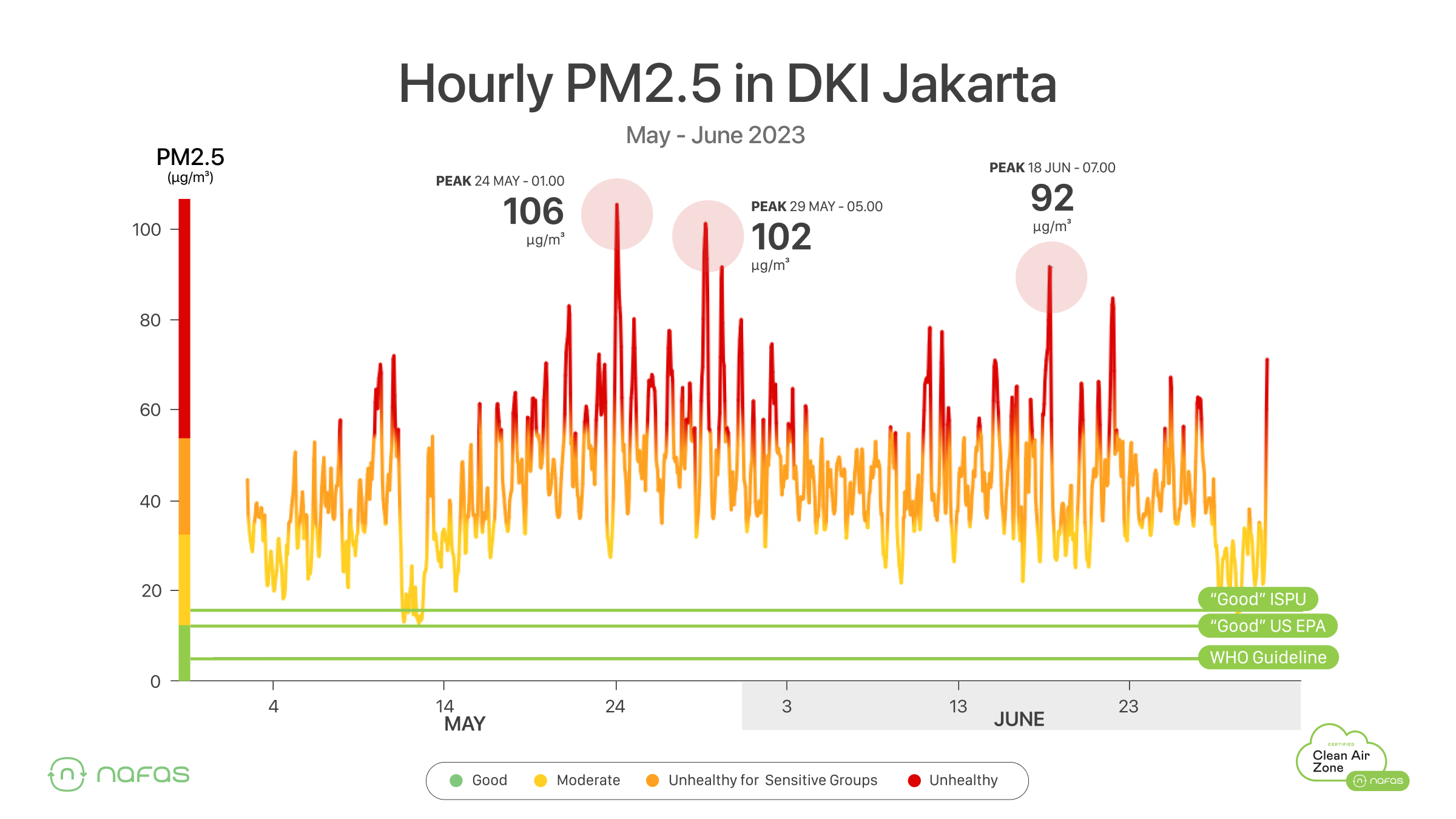
So how much does outdoor air pollution impact us as we sit in our air conditioned buildings? The data shows quite a lot.
Let’s take a look at some examples from an office, a school, a gym and a home - comparing indoor and outdoor air quality at the same time.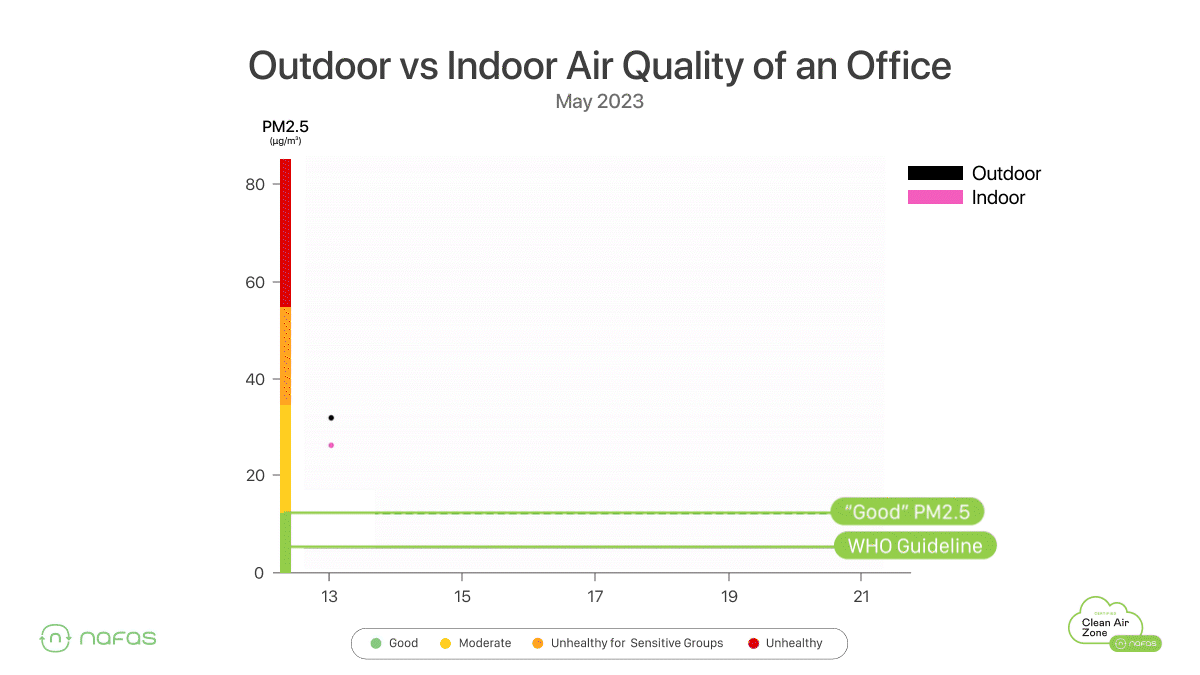
An office building in the middle of Kuningan, Jakarta during work days.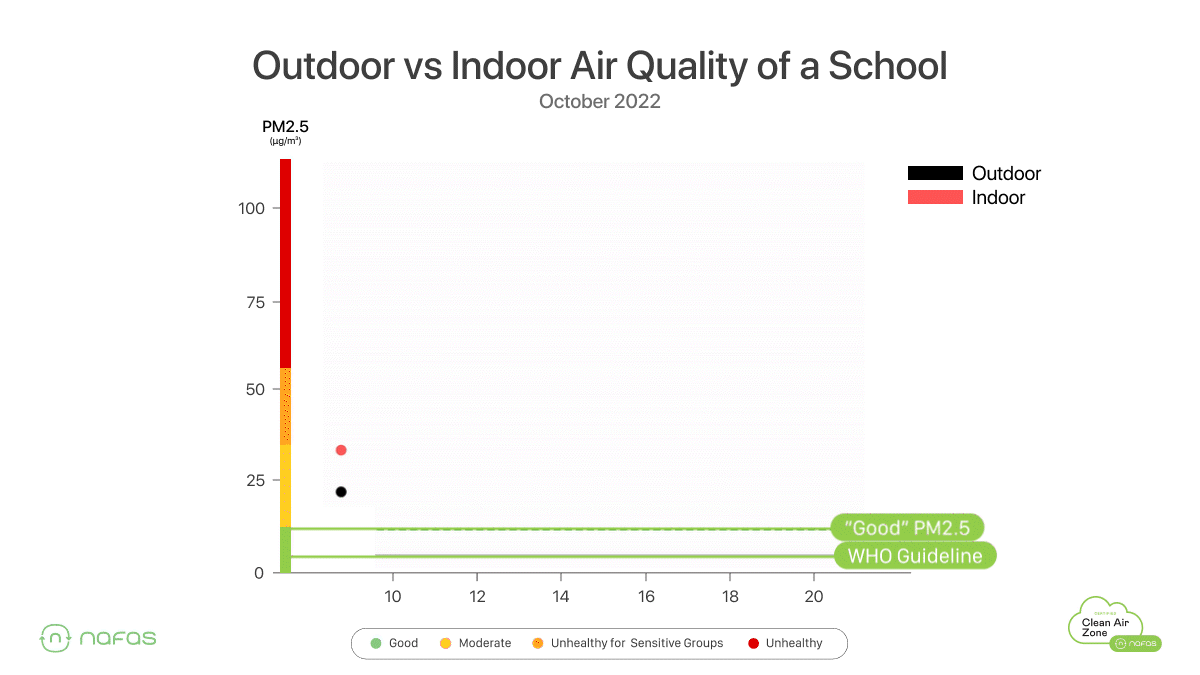
An international school in North Jakarta during a school days.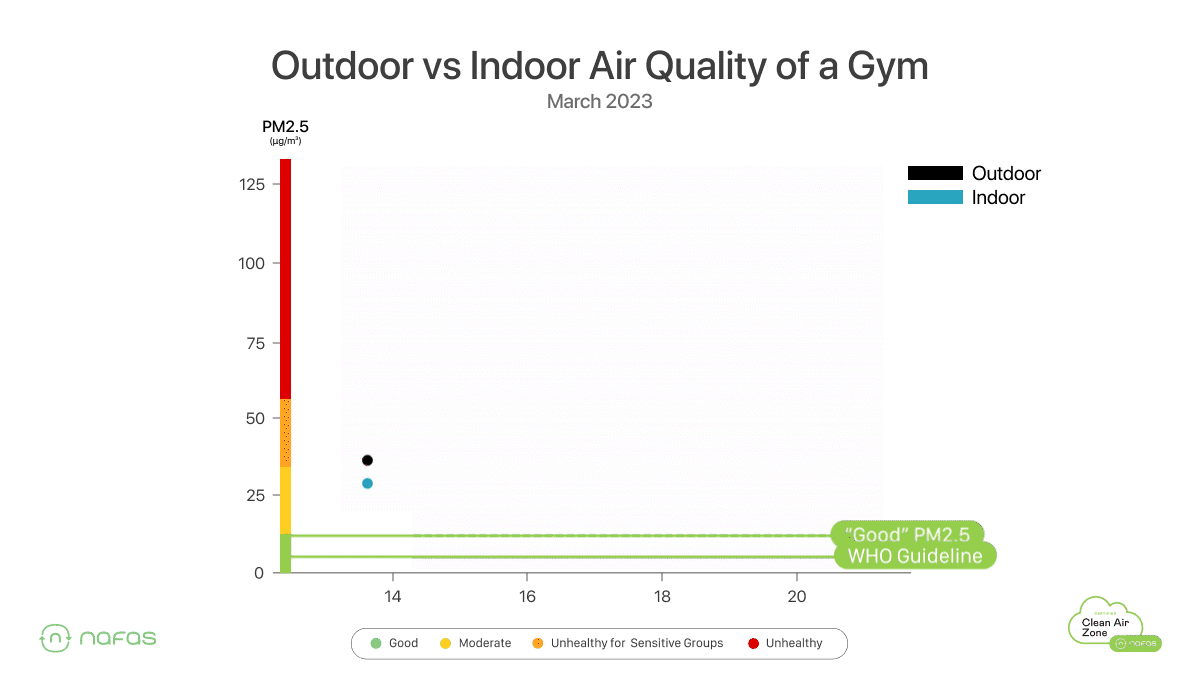
An gym in the middle of Bendungan Hilir, Jakarta during work days.
A luxurious apartment in South Jakarta over 24 hours.
Research has shown that this pollution inside our buildings actually impacts us a lot more than we think.
Our buildings impact our cognitive performance
Over the last few years, there has been a surge in research which studies the impact of our buildings on our performance - giving us an idea of how these buildings really do shape us. Dr. Joseph Allen founded the Harvard Healthy Buildings institute at the T.C. Chan School of Public Health and leads countless studies measuring how our indoor spaces make us unhealthy.
Published in 2021, the COGFx study looked at the impact of indoor climate on the performance of office workers across countries like Mexico, India, Thailand, US, UK and China. The research focused on how ventilation and air pollution affected the performance of office workers using a variety of cognitive tests.
One outcome stood out:
At PM2.5 concentrations above 12 ug/m3, office workers performed worse on 4 out of 5 cognitive tests.
Let’s compare that to the indoor air quality at major office buildings in Kuningan and SCBD in Jakarta from the last 1 month.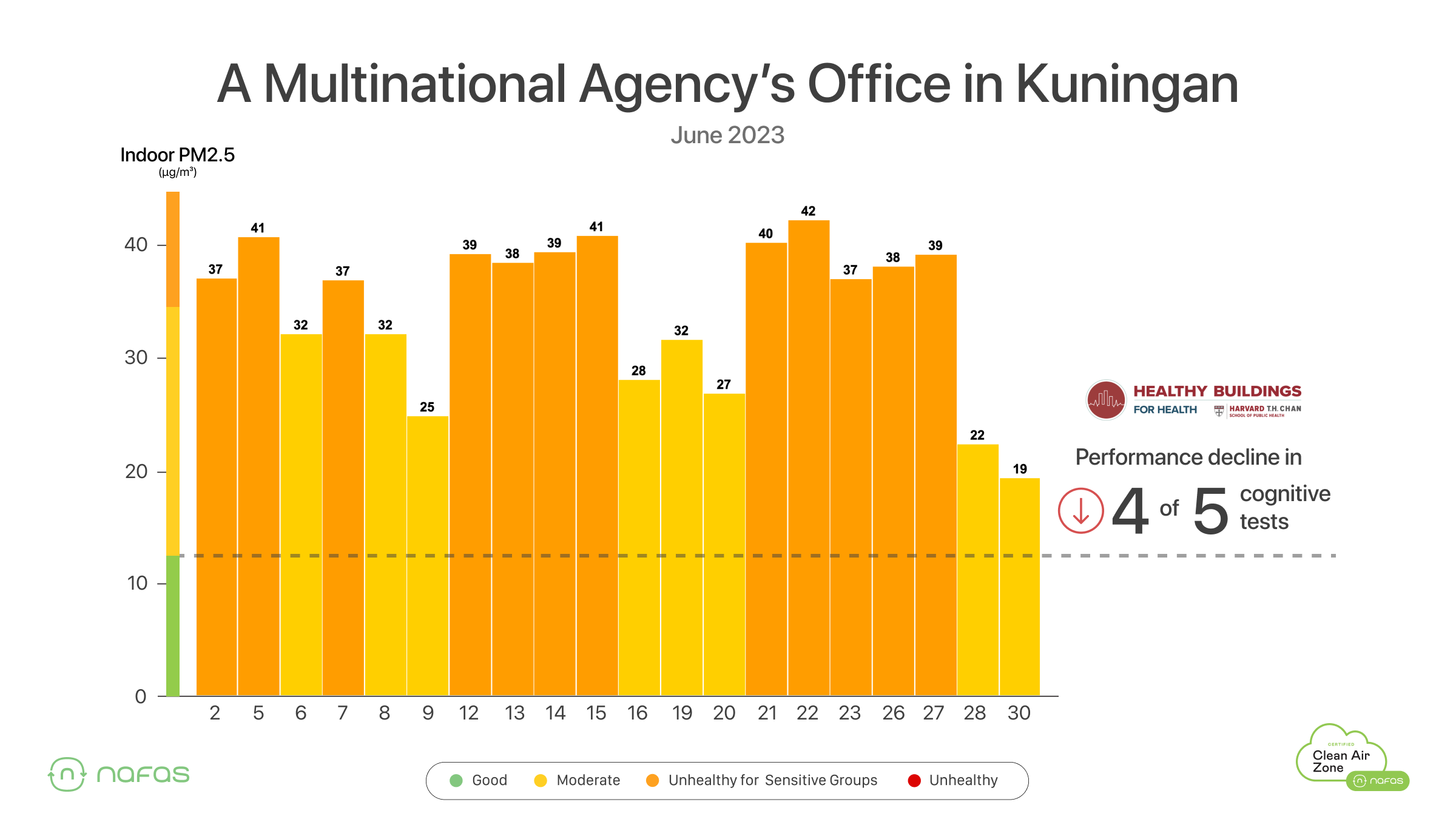
An office building in Kuningan, Jakarta.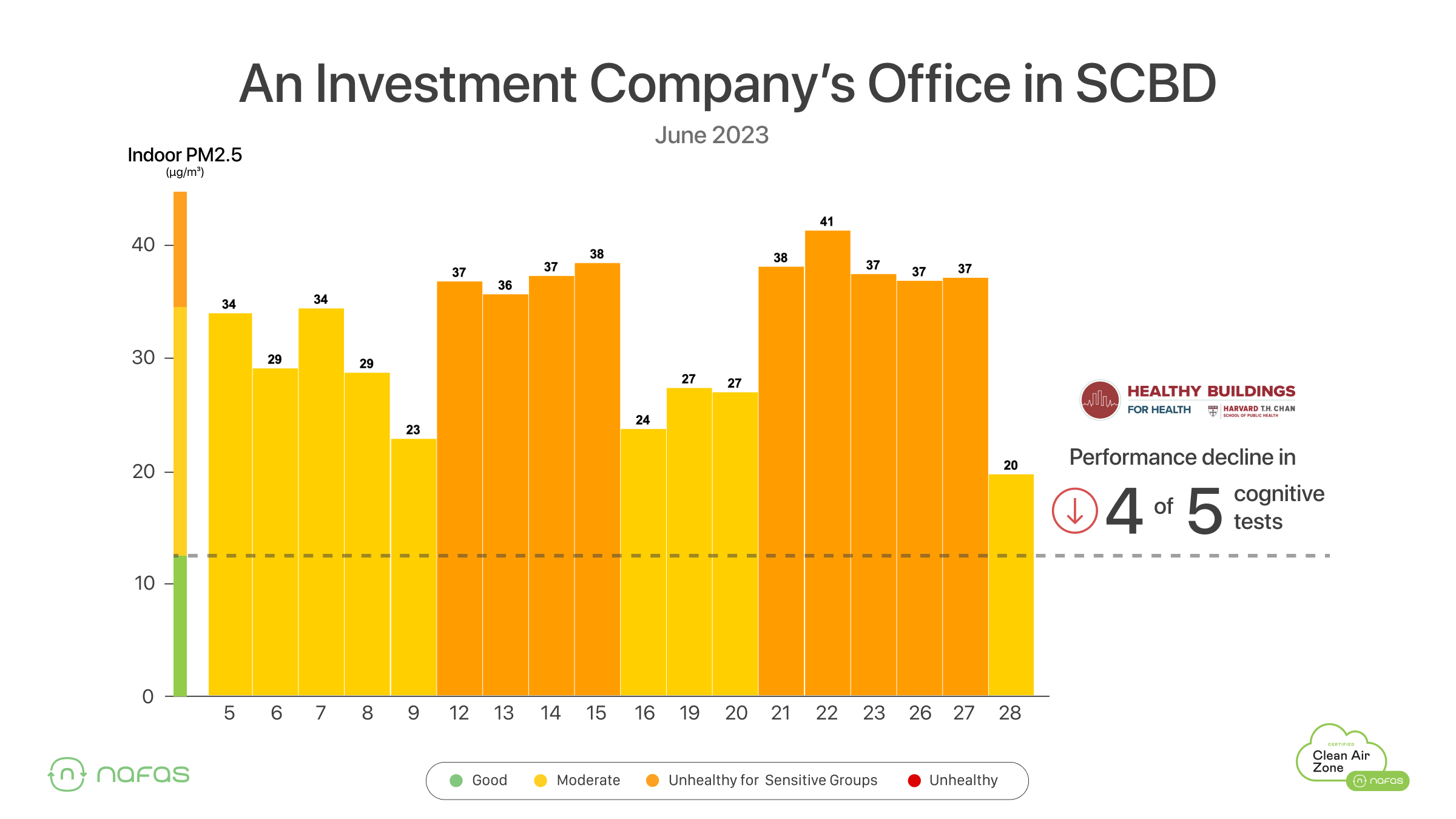
An office building in SCBD, Jakarta.
In the two offices above, we can see that the PM2.5 levels indoors far exceeded the 12 µg/m3 threshold for lower performance from Dr. Allen’s studies.
This is happening right on our watch - and it’s happening where we work, where our children go to school, where we exercise and where we live.
But, we can do something about it.
Our buildings are broken - but they can be fixed
The state of our air in our buildings today is unhealthy. However, we have the power to make it healthy again.
Just like we can control the temperature inside our buildings, we can control the air quality too. Constantly measuring our air quality indoors is a first and important step to improving our health indoors.
Healthy air inside our buildings is not impossible - let’s look at the data from Pacific Century Place, Jakarta’s healthiest building.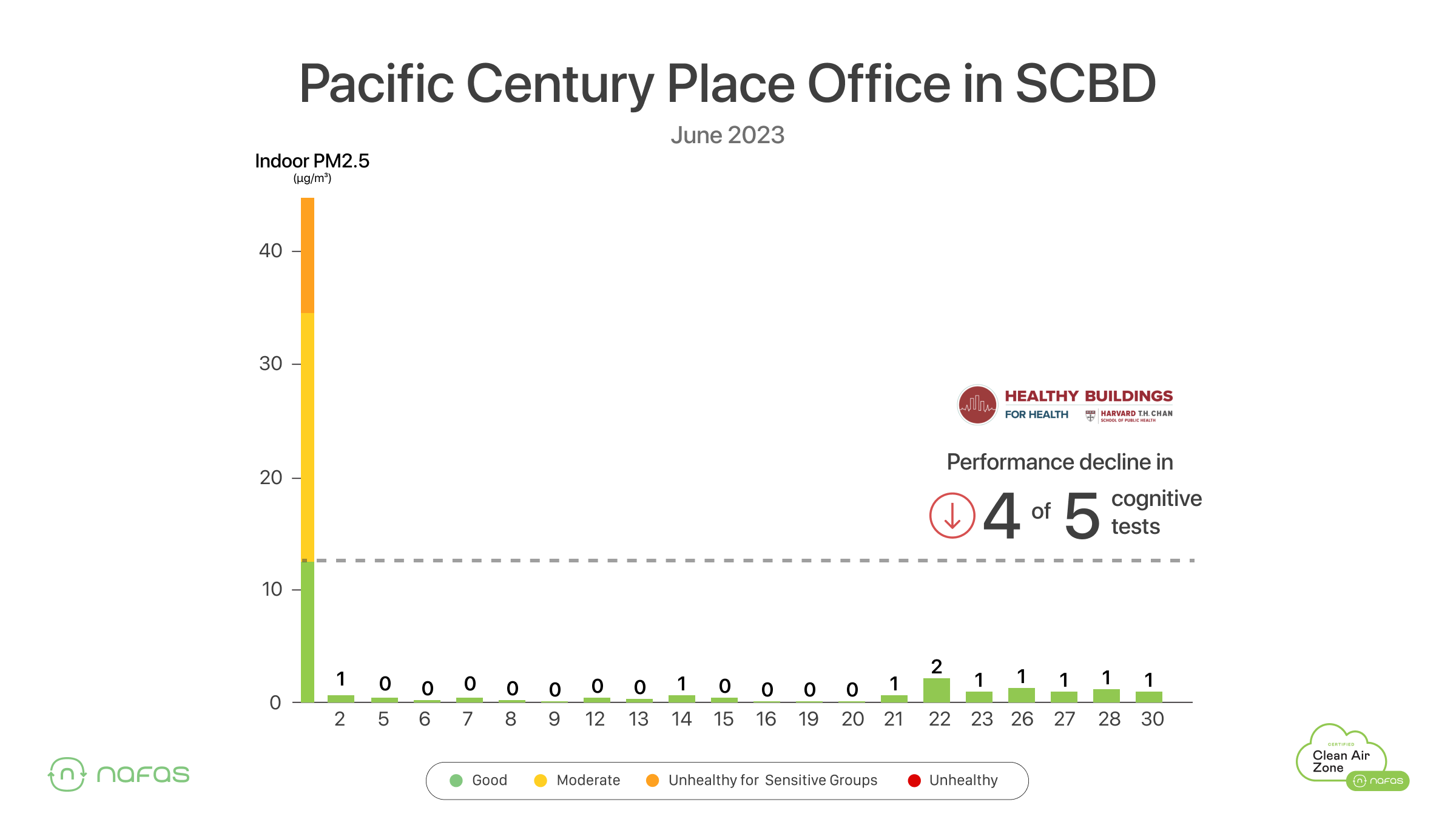
We don’t have much control over outdoor air quality, but we have full control over how we manage the air we breathe indoors.
We shape our buildings, so let’s shape them to be healthy.
Becoming a Clean Air Zone is So Easy
Interested in ensuring healthy air quality in your office, gym, school, or home at all times? Feel free to contact us at [email protected] or click the link below. Let's join our mission to make clean air the standard in our offices!
